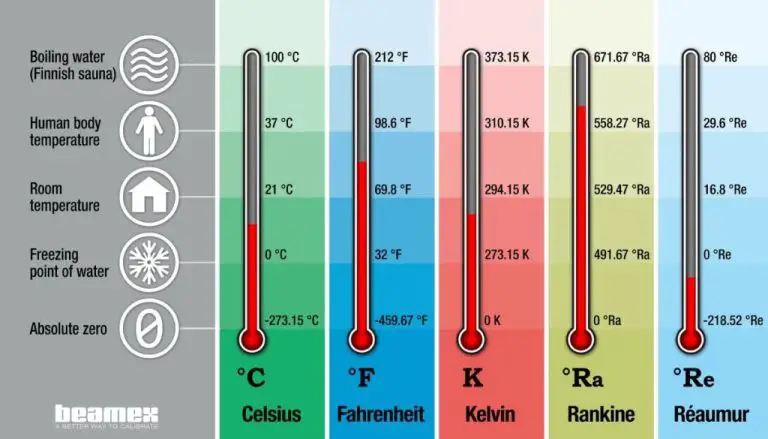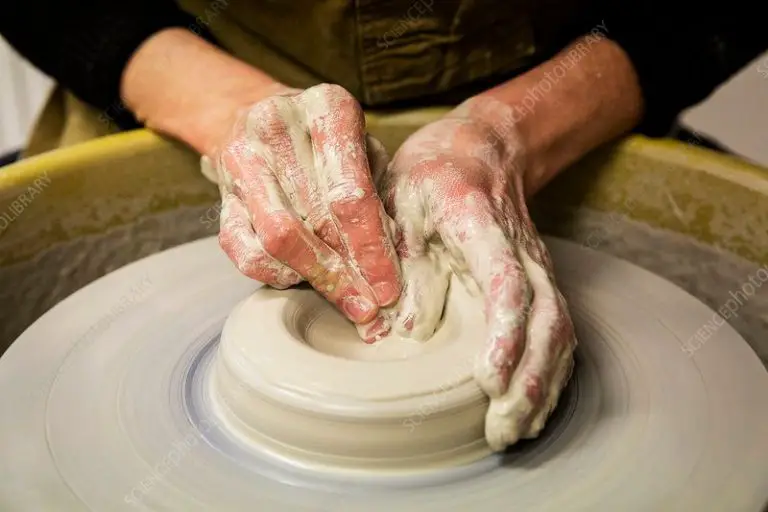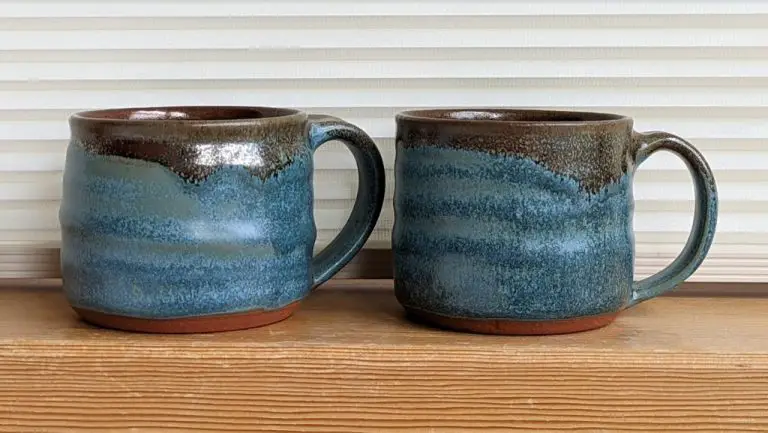What Can You Add To Clay To Make It Stronger?
Clay is a versatile material used for making pottery, sculptures, tiles, bricks, and more. However, regular clay can be brittle and prone to cracking, chipping, or breaking when fired. Strengthening clay before molding and firing it makes the finished ceramic pieces more durable and resistant to damage. This allows creating sturdier objects for practical use or more intricate artistic works that require thin extensions that would otherwise snap off. Knowing what additives to mix into clay enables crafting high-quality ceramic pieces that hold up well over time.
Using Sand
Sand is one of the most common additives for strengthening clay. It acts as a reinforcing agent by improving the structural integrity of the clay body. Sand particles are much larger than clay particles, so adding sand creates spaces between the clay particles for improved consistency and workability.
The main benefit of sand is that it enables the development of strong inter-particle bonding. As the clay dries and goes through the firing process, the sand particles bind tightly with the clay body to form a sturdy ceramic material. This prevents weaknesses in the final product like cracking, breaking or warping.
Sand also helps reduce shrinkage in clay as it dries and fires. Clay naturally contracts as it loses moisture, but the sand particles resist shrinkage to maintain the shape and measurements of the original clay form. Less shrinkage also means fewer deformities and defects.
In most cases, around 10-20% sand content is ideal for strengthening clay. Too much can make the clay brittle. The particle size of the sand also matters. Fine sand with smaller grains typically works best to maximize the strengthening effects without compromising workability.
Fibrous Additives
One way to strengthen clay is by adding fibrous materials. Certain plant fibers and asbestos fibers can reinforce the clay body and improve its mechanical properties.
Plant fibers such as hemp, jute, and sisal may be chopped up and mixed into the clay. As the clay is fired, these fibers burn out, leaving behind tiny channels and pores. This creates a structural network that increases the clay’s tensile strength and fracture toughness.
Asbestos fibers are another traditional additive for strengthening clay. Asbestos refers to a group of naturally occurring silicate minerals that form microscopic fibers. When blended into clay at around 10-15% by volume, asbestos fibers can enhance flexural strength and fracture resistance. However, asbestos is a known carcinogen and its use is highly restricted due to health concerns. Non-toxic alternatives are recommended for modern applications.
Chemical Additives
Certain chemicals can be mixed into clay to increase its strength and durability. Two of the most commonly used chemical additives for strengthening clay are calcium chloride and sodium silicate.
Calcium chloride is a salt that can help clay become more dense and impermeable to water. When added to clay in small amounts, calcium chloride enables the clay particles to pack together more tightly, reducing porosity. This makes the dried clay harder and less prone to cracking or crumbling.
Sodium silicate, also known as water glass, is another chemical that can improve the structural integrity of clay. It acts as a binder between clay particles and forms insoluble compounds with metal ions present in the clay. This cementing effect makes the clay body less porous and more rigid after firing.
While chemical additives like calcium chloride and sodium silicate make clay stronger, they can also make the clay more difficult to work with. Too much additive can make the clay sticky and slow to dry. The proportions need to be optimized for the specific clay body and intended use.
Ball Clay
Ball clay is a type of mineral clay that consists primarily of kaolinite and gets its name from its spherical shape. When added to clay bodies, ball clay greatly increases strength through its “plasticity”, or ability to bind materials together and make them more malleable. Unlike common clays that break down more easily when wet, ball clay maintains its structural integrity and helps hold a clay body together as it’s molded into a shape.
About 25% of a clay body can consist of ball clay to provide an extremely durable finished product. The higher the ball clay content, the less likely the finished piece will slump, crack or warp during drying and firing. Ball clays also fire to a light cream or near-white color, allowing the clay’s natural color to remain pure. However, too much ball clay can make a clay mixture too sticky and difficult to work with. Finding the right balance is key to maximizing its strengthening abilities.
Slip
Slip is made from clay particles suspended in water. It acts as a binder that improves the strength of unfired clay bodies. When slip is added to clay it fills the pores, lubricates the clay particles, and increases plasticity. This allows the clay particles to pack together more densely, reducing voids and improving strength.
The benefits of adding slip to clay are most noticeable after drying and firing. As the water evaporates from the slip, it pulls clay particles together through capillary action. This reduces cracking and weak spots. Slip glues clay pieces together, bonds layers of clay, and allows joining with minimal drying shrinkage. Using 5-10% slip is often optimal for improving clay strength.
Reinforcements
Adding reinforcing materials to clay can significantly increase its strength and durability. Two commonly used reinforcements are wire and fiberglass.
Wire, especially fine stainless steel wire mesh or cloth, can be pressed into wet clay or slipped between layers of clay to form a reinforced slab. The thin metal strands provide strength while not adding too much weight. Wire reinforcement allows large or thin clay structures to be created while resisting sagging or cracking during drying and firing.
Fiberglass is another excellent reinforcement option. Short fiberglass strands mixed uniformly into clay slip or clay bodies create a composite material that is stronger and more crack-resistant. The glass fibers bridge across any cracks that try to form as the clay shrinks, preventing cracks from propagating. Fiberglass-reinforced clay can enable the creation of large, thin-walled pieces.
Compaction
Proper compaction is crucial for making strong ceramic pieces. Compaction refers to the process of pressing clay to remove air pockets and bring clay particles into closer contact. Air trapped between clay particles acts as a weak point, so minimizing air pockets strengthens the final ceramic. There are several ways to compact clay:
– Throwing on the potter’s wheel compacts clay through the wheel’s centrifugal force and the potter’s hands pressing against the spinning clay.
– Ram pressing involves forcibly pushing a ram tool into a plaster mold filled with clay powder to compact it into shape.
– Jiggering uses a spinning plaster mold and profile tool to compact clay while shaping it.
– Isostatic pressing uses equal pressure from all directions by surrounding soft clay in a flexible mold then applying high hydraulic or gas pressure to compress it.
The more thoroughly clay is compacted, the denser and stronger the final ceramic can be after firing. Eliminating air pockets allows clay particles to pack tightly together and bonds to form a tight, uniform structure. Proper compaction makes ceramics resistant to stresses that could otherwise cause cracks or breakage.
Firing
The firing process is crucial for developing strength in clay. During firing, the clay undergoes chemical and physical changes that alter its mineral structure. As the temperature rises, clay particles bond together more tightly, increasing the material’s strength and hardness.
Firing temperature has a major impact on clay strength. Higher firing temperatures result in stronger clay bodies. For example, earthenware clays are typically fired at lower temperatures around 1,800-2,000°F and have modest strength. Stonewares are fired to over 2,200°F and develop much greater strength and durability. The highest strength clays are porcelains, fired around 2,400-2,600°F.
The length of time clay is held at peak temperature also affects strength. Longer soak times allow clays to fully vitrify and densify. Rapid firing may produce under-fired clay with porous areas that weaken the material. Proper firing transforms soft, weak clay into a hardened, durable ceramic.
Controlled cooling after peak temperature is reached also helps optimize clay strength. Slow cooling prevents cracks and flaws that undermine strength. The firing process as a whole determines the final strength of fired clay bodies.
Conclusion
In summary, there are several methods to strengthen clay to improve its durability and performance for various applications. Adding sand provides strength through its quartz crystals while decreasing shrinkage. Fibrous materials like straw and sawdust improve tensile strength to resist cracking. Chemical additives like sodium silicate form glassy bonds, while ball clay contributes vitrification and plasticity. Using slip casting and compaction techniques also optimizes density. Firing to the proper temperature range creates stronger ceramic bonds. The optimal approach depends on factors like the clay type, intended use, and desired qualities. With the right reinforcements and processing, clay can be enhanced from a soft, weak material to one with substantial durability and hardness.
As a final tip, resist the temptation to over-strengthen clay to the point it becomes brittle and loses its workability. The key is balancing strength with other desirable qualities through careful testing and experimentation with additives and techniques. With some thoughtful modifications, clay’s weak spots can be reinforced to unlock its full potential while retaining its fundamental character.



